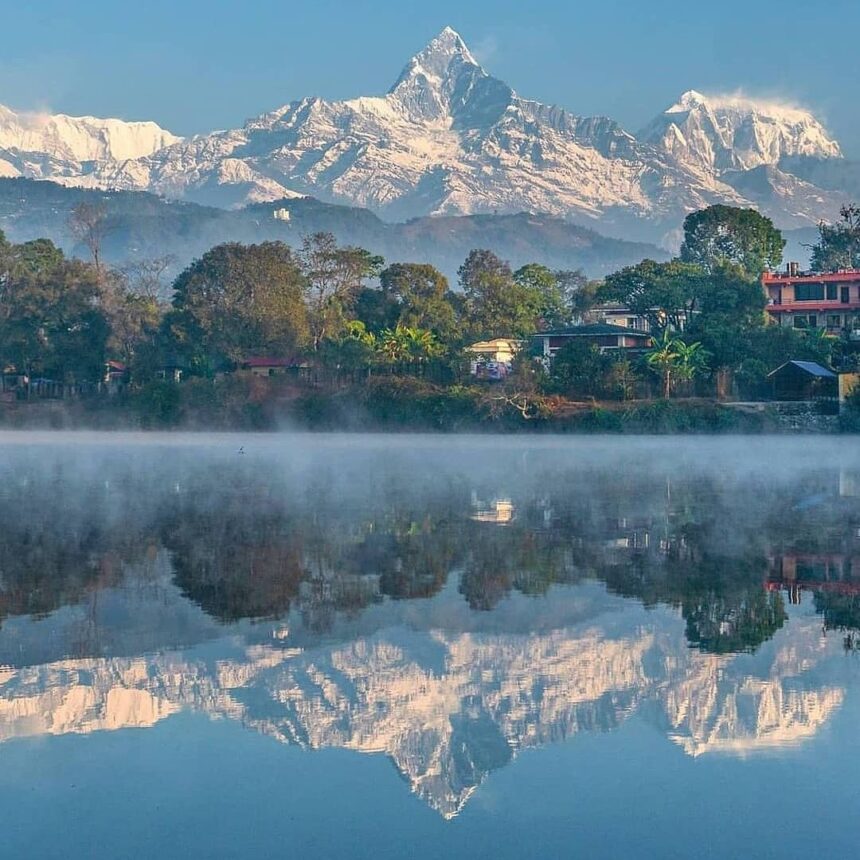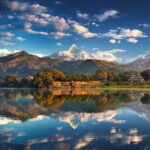Introduction
Annapurna, a majestic mountain range in the Nepalese Himalayas, is renowned worldwide for its stunning peaks, trekking routes, and breathtaking natural beauty. It is a dream destination for adventure seekers, nature lovers, and cultural travelers alike. Beyond its towering mountains, Annapurna encompasses lush valleys, traditional villages, and rich biodiversity, making it an ideal choice for budget-friendly vacations with unforgettable experiences.
- Introduction
- History of Annapurna
- Fascinating Facts About Annapurna
- Timeline of Annapurna
- Significance of Annapurna
- 1. Natural Significance
- 2. Adventure & Tourism
- 3. Cultural Importance
- 4. Spiritual & Inspirational Value
- 5. Economic Contribution
- Observance & Cultural Activities
- Wishing at Annapurna
- Daily Life Impact
- FAQs About Annapurna
- Important Tips for Visitors
- Importance in Society
- Conclusion
This guide explores Annapurna’s history, fascinating facts, timeline, significance, observance, wishing, FAQs, daily life impact, and societal importance, written in a human-friendly, immersive style to help travelers truly connect with the region.
History of Annapurna
Ancient Significance: The name Annapurna originates from Sanskrit, meaning “Goddess of Food and Nourishment”, reflecting the region’s sacred and cultural importance.
Mountaineering History: Annapurna I, the highest peak (8,091 m), was first summited in 1950 by French climbers Maurice Herzog and Louis Lachenal.
Trekking Development: The Annapurna Circuit and Sanctuary treks were developed in the 1970s–1980s, opening Nepal’s natural beauty to global adventure tourism.
Local Settlements: Indigenous communities, including Gurung, Magar, and Thakali ethnic groups, have lived here for centuries, preserving culture, religion, and agriculture.
Fun Fact: Annapurna is considered the world’s deadliest 8,000-meter peak for climbers, with a high fatality-to-summit ratio, adding to its mystique.
Fascinating Facts About Annapurna
Highest Peak: Annapurna I stands at 8,091 meters, the 10th highest mountain in the world.
Annapurna Sanctuary: A hidden natural amphitheater surrounded by snow-capped peaks, offering spectacular trekking opportunities.
Biodiversity Hotspot: Home to rhododendron forests, rare snow leopards, red pandas, and diverse bird species.
Cultural Richness: Local villages maintain traditional architecture, festivals, and handicrafts, offering travelers an authentic cultural experience.
Adventure Tourism: Popular for trekking, mountaineering, paragliding, and camping, attracting adventure enthusiasts worldwide.
Sacred Significance: Annapurna is revered in Hindu and Buddhist traditions, symbolizing abundance and protection.
Annapurna Conservation Area: The first and largest conservation area in Nepal, promoting sustainable tourism and ecological preservation.
Photographer’s Paradise: Offers stunning sunrise and sunset views, Himalayan panoramas, and pristine landscapes.
Local Cuisine: Trekking routes feature Dal Bhat, momo, and traditional Gurung meals, reflecting regional flavors.
Trekking Accessibility: Routes like Annapurna Circuit, Ghorepani-Poon Hill, and Annapurna Base Camp cater to different levels of fitness and budgets.
Timeline of Annapurna
1950: First successful summit of Annapurna I by French climbers.
1960s–1970s: Trekking routes gradually developed; international attention grows.
1985: Annapurna Conservation Area established to preserve biodiversity and culture.
1990s–2000s: Infrastructure improvements support safer treks and eco-tourism.
2010s: Annapurna Circuit and Base Camp treks gain worldwide popularity.
Present: Continues to attract trekkers, climbers, photographers, and cultural enthusiasts globally.
Significance of Annapurna
1. Natural Significance
Annapurna preserves unique Himalayan ecosystems, glaciers, rivers, and forests, making it vital for biodiversity conservation and climate studies.
2. Adventure & Tourism
Globally recognized for trekking and mountaineering, Annapurna significantly contributes to Nepal’s tourism economy.
3. Cultural Importance
Houses ethnic communities maintaining traditional lifestyles, festivals, and religious practices, offering cultural immersion for travelers.
4. Spiritual & Inspirational Value
Mountains inspire reflection, mindfulness, and personal growth, fostering a deep connection with nature.
5. Economic Contribution
Supports guides, porters, homestays, local shops, and trekking agencies, providing sustainable income to local communities.
Observance & Cultural Activities
Festivals: Local communities celebrate festivals like Tihar, Dashain, and Lhosar, blending Hindu and Buddhist traditions.
Rituals: Trekkers often see shrines, prayer flags, and mani stones, reflecting daily spiritual practices.
Traditional Practices: Agriculture, livestock, and handicrafts continue, maintaining authentic regional culture.
Eco-Tourism Efforts: Conservation initiatives encourage responsible trekking, waste management, and community engagement.
Wishing at Annapurna
Visitors can engage in wishing rituals or reflection moments while trekking or enjoying scenic viewpoints:
🌄 “May every journey bring courage, wisdom, and joy.”
🕉️ “Wishing peace, abundance, and spiritual growth for all.”
🌸 “May Annapurna’s beauty inspire mindfulness, gratitude, and adventure.”
These practices enhance spiritual connection and personal reflection during the visit.
Daily Life Impact
Annapurna influences trekkers, locals, and society:
For Visitors: Offers adventure, natural beauty, photography, and cultural learning.
For Locals: Supports guiding services, homestays, trekking logistics, handicrafts, and local cuisine.
For Society: Promotes eco-tourism, heritage preservation, environmental awareness, and cultural pride.
FAQs About Annapurna
Q1: Which trekking routes are the most popular?
A: Annapurna Circuit, Ghorepani-Poon Hill, and Annapurna Base Camp.
Q2: Is Annapurna suitable for beginners?
A: Some routes like Poon Hill trek are beginner-friendly; base camp and high-altitude treks require experience.
Q3: When is the best time to visit?
A: Spring (March–May) and Autumn (September–November) for clear skies and pleasant weather.
Q4: Do I need a guide or permit?
A: Yes, ACAP (Annapurna Conservation Area Project) permit and TIMS card are required; guides are recommended for safety.
Q5: Is it budget-friendly?
A: Yes, trekking can be affordable through homestays, local food, and shared guiding services.
Important Tips for Visitors
Carry warm clothing, trekking shoes, and basic medical kits.
Respect local customs, festivals, and religious practices.
Use eco-friendly practices, like avoiding plastic and leaving minimal waste.
Hire local guides and porters to support community livelihoods.
Plan trekking schedules around sunrise and sunset for the best views.
Importance in Society
Annapurna is culturally, economically, and environmentally significant:
Heritage Preservation: Maintains traditional villages, religious practices, and ethnic culture.
Economic Support: Provides livelihoods through tourism, trekking, and local products.
Educational Value: Offers insights into Himalayan ecology, geography, and culture.
Spiritual Role: Encourages reflection, mindfulness, and connection with nature.
Community Pride: Strengthens cultural identity, environmental awareness, and eco-tourism practices.
Conclusion
Annapurna is more than a mountain range; it is a symbol of adventure, spirituality, and cultural richness. Affordable, awe-inspiring, and culturally immersive, it offers travelers unforgettable trekking experiences, Himalayan panoramas, and encounters with traditional Nepalese life.
🌄 Wishing for You: May your journey to Annapurna inspire courage, gratitude, and mindfulness, letting every mountain vista, village encounter, and sunrise enrich your adventure with knowledge, wonder, and lasting memories.








